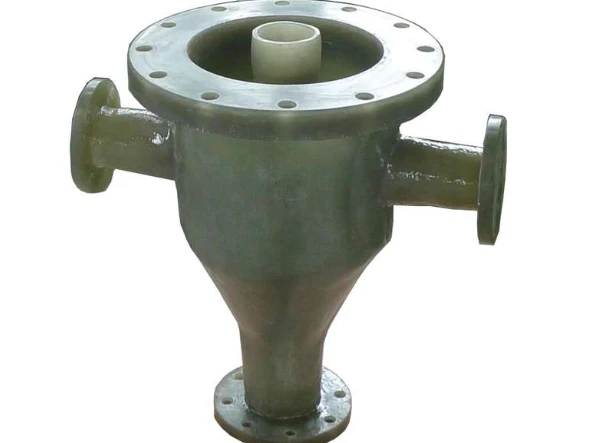
-
 Afrikaans
Afrikaans -
 Albanian
Albanian -
 Amharic
Amharic -
 Arabic
Arabic -
 Armenian
Armenian -
 Azerbaijani
Azerbaijani -
 Basque
Basque -
 Belarusian
Belarusian -
 Bengali
Bengali -
 Bosnian
Bosnian -
 Bulgarian
Bulgarian -
 Catalan
Catalan -
 Cebuano
Cebuano -
 China
China -
 China (Taiwan)
China (Taiwan) -
 Corsican
Corsican -
 Croatian
Croatian -
 Czech
Czech -
 Danish
Danish -
 Dutch
Dutch -
 English
English -
 Esperanto
Esperanto -
 Estonian
Estonian -
 Finnish
Finnish -
 French
French -
 Frisian
Frisian -
 Galician
Galician -
 Georgian
Georgian -
 German
German -
 Greek
Greek -
 Gujarati
Gujarati -
 Haitian Creole
Haitian Creole -
 hausa
hausa -
 hawaiian
hawaiian -
 Hebrew
Hebrew -
 Hindi
Hindi -
 Miao
Miao -
 Hungarian
Hungarian -
 Icelandic
Icelandic -
 igbo
igbo -
 Indonesian
Indonesian -
 irish
irish -
 Italian
Italian -
 Japanese
Japanese -
 Javanese
Javanese -
 Kannada
Kannada -
 kazakh
kazakh -
 Khmer
Khmer -
 Rwandese
Rwandese -
 Korean
Korean -
 Kurdish
Kurdish -
 Kyrgyz
Kyrgyz -
 Lao
Lao -
 Latin
Latin -
 Latvian
Latvian -
 Lithuanian
Lithuanian -
 Luxembourgish
Luxembourgish -
 Macedonian
Macedonian -
 Malgashi
Malgashi -
 Malay
Malay -
 Malayalam
Malayalam -
 Maltese
Maltese -
 Maori
Maori -
 Marathi
Marathi -
 Mongolian
Mongolian -
 Myanmar
Myanmar -
 Nepali
Nepali -
 Norwegian
Norwegian -
 Norwegian
Norwegian -
 Occitan
Occitan -
 Pashto
Pashto -
 Persian
Persian -
 Polish
Polish -
 Portuguese
Portuguese -
 Punjabi
Punjabi -
 Romanian
Romanian -
 Russian
Russian -
 Samoan
Samoan -
 Scottish Gaelic
Scottish Gaelic -
 Serbian
Serbian -
 Sesotho
Sesotho -
 Shona
Shona -
 Sindhi
Sindhi -
 Sinhala
Sinhala -
 Slovak
Slovak -
 Slovenian
Slovenian -
 Somali
Somali -
 Spanish
Spanish -
 Sundanese
Sundanese -
 Swahili
Swahili -
 Swedish
Swedish -
 Tagalog
Tagalog -
 Tajik
Tajik -
 Tamil
Tamil -
 Tatar
Tatar -
 Telugu
Telugu -
 Thai
Thai -
 Turkish
Turkish -
 Turkmen
Turkmen -
 Ukrainian
Ukrainian -
 Urdu
Urdu -
 Uighur
Uighur -
 Uzbek
Uzbek -
 Vietnamese
Vietnamese -
 Welsh
Welsh -
 Bantu
Bantu -
 Yiddish
Yiddish -
 Yoruba
Yoruba -
 Zulu
Zulu
grp flange
Understanding GRP Flange Features and Applications
Glass Reinforced Plastic (GRP) flanges are an essential component used in various industries, particularly in situations requiring strong, lightweight materials that resist corrosion. GRP is a composite material made from a polymer matrix reinforced with glass fibers, offering a perfect solution where traditional metals may falter due to environmental conditions. This article delves into the characteristics, advantages, and applications of GRP flanges.
Characteristics of GRP Flanges
GRP flanges are known for their distinctive properties. Firstly, the strength-to-weight ratio is outstanding; they are considerably lighter than steel or other metal counterparts, which makes them easier to handle and install. Despite being lightweight, GRP flanges provide excellent strength and rigidity, making them suitable for various applications where mechanical resilience is crucial.
Another defining feature of GRP flanges is their exceptional corrosion resistance. Metal flanges can suffer from rust and degradation when exposed to harsh chemicals or environmental elements. In contrast, GRP flanges are resistant to a wide array of chemicals, including acids and bases, contributing to their longevity in demanding environments. This resistance significantly reduces maintenance costs and prolongs the service life of pipelines and industrial systems using these components.
Additionally, GRP flanges offer good thermal insulation properties. They have a low thermal conductivity, meaning they can help maintain temperature stability in processes where thermal fluctuations are critical. Their electrical insulation capabilities also make them suitable for applications within high-voltage environments, preventing conductive failures and enhancing safety.
Advantages of GRP Flanges
The benefits of using GRP flanges go beyond their intrinsic properties. Installation efficiency is a notable advantage. Their lightweight nature allows for easier transportation and handling, which can significantly reduce labor costs during installation. Moreover, since GRP flanges do not require special tools for installation, this simplicity further expedites assembly.
grp flange

Cost-effectiveness is another critical aspect. Although the initial investment in GRP materials may be higher than traditional metals, the lifecycle costs are typically lower due to reduced maintenance, corrosion resistance, and the longevity of the flanges. In many cases, industries find that GRP flanges prove to be a more economical choice over time.
Additionally, GRP flanges can be manufactured in various sizes and shapes, allowing for versatility in designs. They can be customized to meet specific requirements, making them suitable for different applications ranging from chemical processing plants to water treatment facilities.
Applications of GRP Flanges
GRP flanges are widely employed across numerous industries. In the chemical processing sector, their resistance to corrosive substances makes them a preferred choice for piping systems transporting harsh chemicals. Similarly, in wastewater management, GRP flanges can be utilized in installations involving sewage treatment due to their ability to withstand aggressive environments.
In the oil and gas industry, GRP flanges find applications in offshore platforms and pipelines, where they endure demanding conditions and exposure to saltwater. Their lightweight nature is particularly advantageous in these settings, reducing the overall weight of the structure.
Moreover, building and construction sectors increasingly use GRP flanges for railings, brackets, and other structural components, taking advantage of their strength and durability without the weight of traditional materials.
Conclusion
In summary, GRP flanges represent a modern solution for various industrial applications. Their unique combination of lightness, strength, corrosion resistance, and thermal insulation properties positions them as a superior alternative to traditional metal flanges. As industries continue to seek innovative materials that enhance efficiency and reduce costs, the adoption of GRP flanges is likely to expand, paving the way for advancements in engineering and manufacturing practices.









